I balk a little at the idea of riding an e-bike for our multi-day trip across the Helgeland archipelago in northern Norway. Bar a brief pause in my 20s, I have ridden a bike most days of my life without electrical assistance. And we’re only set to average 22 miles (35km) a day, albeit carrying a week’s worth of clothing, which I don’t usually do.
“You’ll enjoy it more this way,” says Maylinn Storjord at the tourist office, where my friend and I are hiring bikes. “It is flat, but Norwegian flat.”
The comparison reminds me of the way surfers in Hawaii scale their waves differently from the rest of us, on account of their huge size. I take her advice but vow not to switch the battery on for at least the first day. I regret this decision almost immediately, as e-bikes are a lot heavier than normal bikes, especially with panniers jam-packed with provisions.
Our journey starts in the small port town of Brønnøysund on the mainland. Over seven days we’ll travel by bike and ferry across the archipelago, covering about 140 miles in total. Helgeland, an atmospheric name if ever there was one, is the southern part of northern Norway, just below the Arctic Circle. The people here are outnumbered by the islands: there are more than 12,000 of them, some minuscule, rising just high enough from the sea for a cormorant to perch on, and others larger, with modest settlements of prettily painted wooden houses. And mountains. Everywhere you look there are mountains.
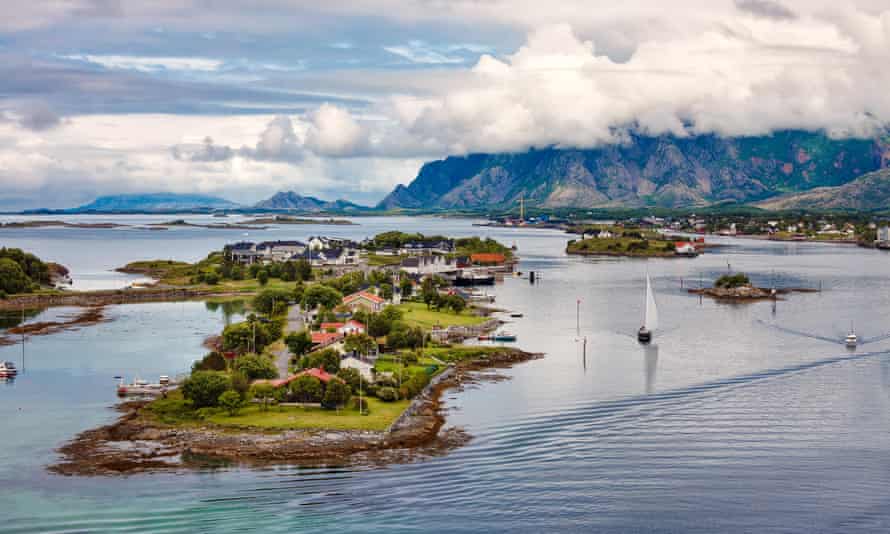
The first one we cycle to is Mount Torghatten, about 10 miles away at the southern tip of nearby Torget island, which we reach by riding over a bridge. We park our bikes at the base and, as we stride up the short, steep climb, it occurs to me that another good reason to be riding an e-bike is to save energy for the hiking.
Torghatten is stout in stature, a granite dome wider than it is high, with a gaping 160-metre-long hole in its centre, which legend says was formed when the king of Sømnafjellene threw his hat to block a deadly arrow and save a beautiful girl from a troll. Folklore abounds in these parts, a legacy of when fishers would travel north up the coastline with their sons on the way to work in Lofoten and use the dramatic scenery as a story backdrop to distract them during the long trips.
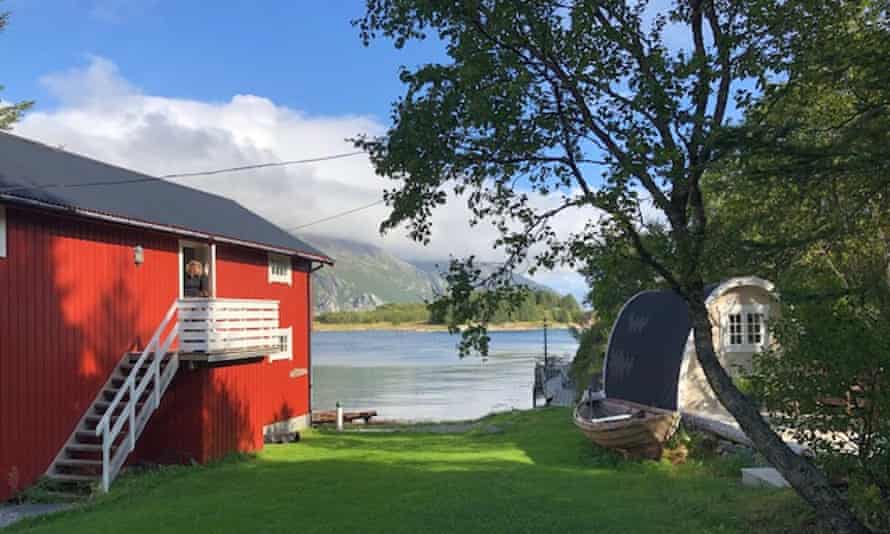
We stay in Brønnøysund the next day, which has a picturesque harbour and cosy cafes, including Goma, where I fuel up with a tasty baked aubergine dish. In the afternoon we ride out to Hildurs Urterarium, a farm restaurant with a lush herb garden. The following morning, under bright blue skies, we take the breakfast ferry, or “metro” as locals call it, north to Vega about 16 miles away. The ferry network is fast and efficient so it’s easy to island hop without a car, and a great way to enjoy the fabled landscape. I spot the 858-metre mountain Dønnamannen and can see why people thought it looked like a giant lying down to watch the stars and why the nearby Seven Sisters range of peaks inspired a story about daughters who snuck out when their father fell asleep and were turned into stone. The mountains are useful for orientation in the archipelago if it’s not cloudy. Today is beautiful and clear, though.
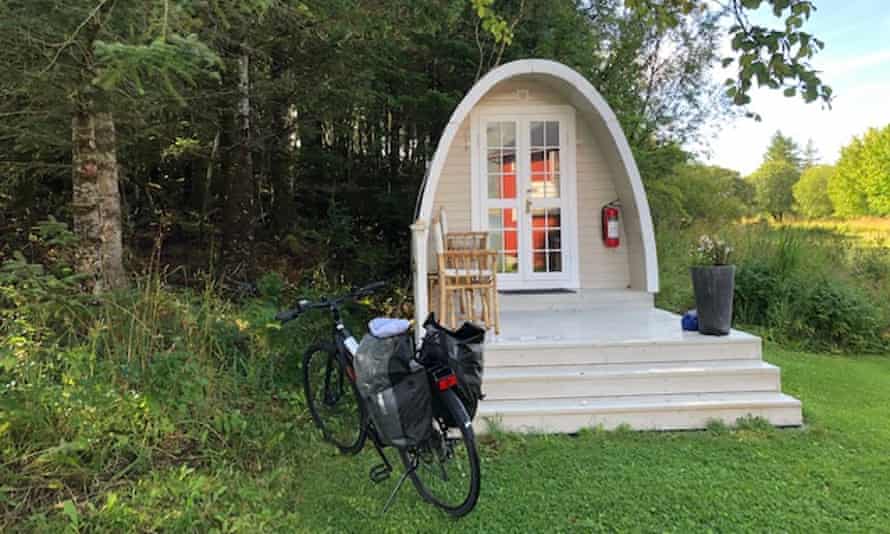
We stop at a bakery for some vegalefsa, a cinnamon pancake-like power snack traditionally favoured by fishers, then ride to the Vega World Heritage Centre. The island was awarded Unesco status in 2004 on account of its distinctively frugal way of life dating back to pre-history, centred on fishing and the harvesting of down from eider ducks. The museum, an angular modernist building sitting just above the shoreline, documents the symbiotic relationship in which islanders tend tiny houses for the ducks, to protect them from eagles and otters, in return for harvesting the soft down. There is also an exhibition on heroic local women, for while the fairytales may champion men, it’s clear the women who stayed to farm and tend the ducks while the men went on long fishing voyages worked just as hard if not harder than their partners.
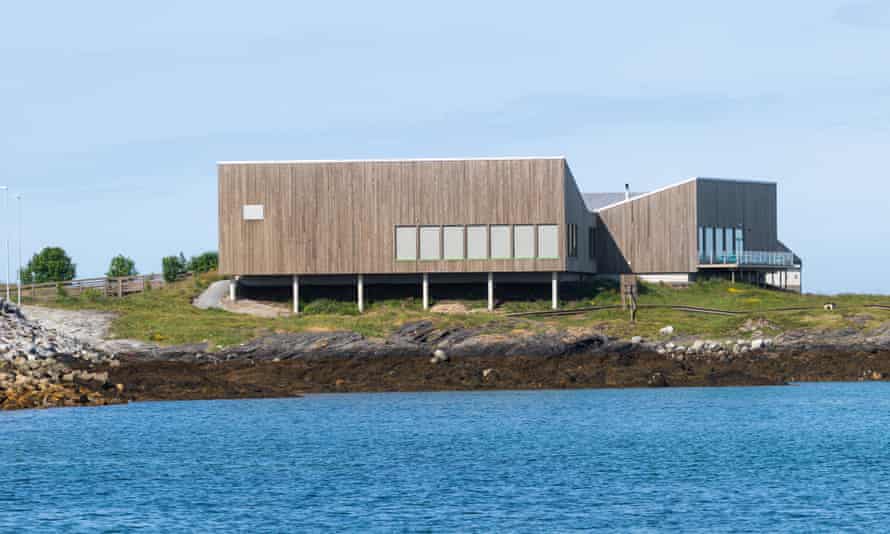
After a lunch of cod cheek, a local delicacy (tasty if a little chewy), we ride on empty winding roads, passing rolling green fields and remote rocky shorelines to Mount Ravnfloget. There, we climb the 2,000 steps of the Vegatrappa path, which takes you from the beach through a sculpture trail and up to the summit, which has the kind of panoramic views that stir the soul. The steps were finished in 2019 and there is also a new via ferrata and nascent climbing community, which has been helpful in encouraging young people to move back to these islands, which have suffered emigration for decades.
We’ve rented a clapboard cabin (£140 a night for up to six people) near the ferry port for the night, and end the day with a gentle kayak along the coastline and weathered-battered docks. The next day we get the express boat north to Herøy, which takes a couple of hours. We tour the island stopping at empty golden sand beaches and hiking up little hills with spongy grass paths that we spot from the road. By now I’m done with not using the e-bike battery; the roads are rarely steep, but they do undulate a lot, so I’m cranking the power up as if it’s morphine and I’ve just had major surgery.
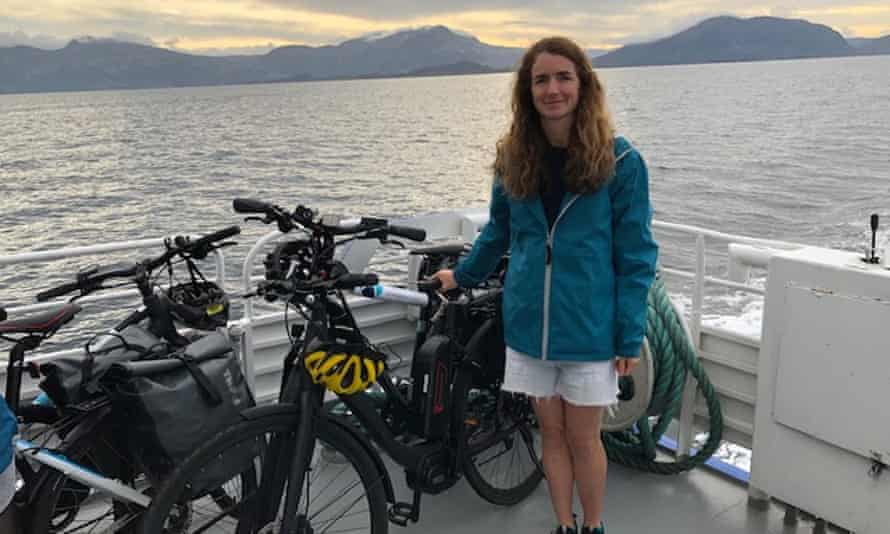
We stay at Elfis Sjøstuer (£70 for up to four people), which roughly translates to “sea camp”. The setting is breathtaking, a renovated fishers’ hut, boathouse and camping pods sit next to the water, and views of Dønnamannen fill the sky. Cycling has overtaken fishing as one of the main reasons to visit the region, and Elfis Sjøstuer, like much of the accommodation in Helgeland, has a “Syklist Velkommen” sign. This means they have secure bike parking, late-night food and packed lunch options, plus facilities to dry and wash clothes.
We have a dip in the freezing shallows to ease our heavy legs, then relax on the wooden jetty reading in the sunshine. The weather can be brutal here, but during our August trip it’s mild; the best time to visit is May to early September. Like much of the Arctic region, Helgeland is getting warmer in a way that is alarming and disquieting for locals, but perversely could also make it more attractive to summer tourists. The pandemic certainly reminded Norwegians how appealing the region is, though it’s still relatively unknown to international visitors.
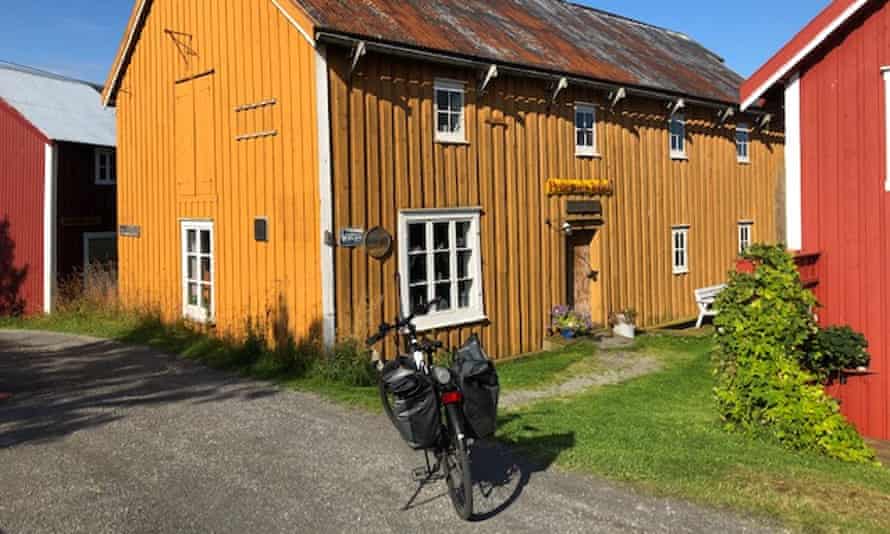
Rain and mist envelop us during our ride to Dønna, the longest and most hilly section of the trip, which doesn’t stop us cycling but does mean we do it with our heads down and don’t get to enjoy the reassuring presence of mountains in our eyeline. We finish in Sandnessjøen and hand in our bikes at the tourist office weary but happy. Given the accumulated mileage, luggage, undulating profile and the weather at the end, the e-bike decision felt totally the right call.
This trip was provided by Visit Norway. Bike hire costs £39 a day for an e-bike or £28 a day for a regular bike. For booking and more information see visithelgeland.com